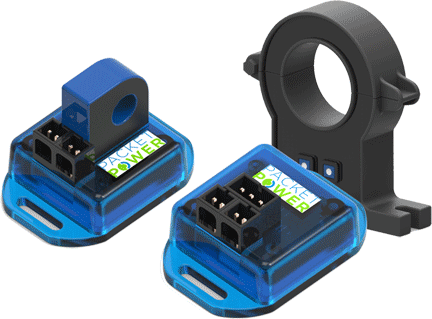Power Monitoring ROI
There are countless reasons for monitoring power in data centers. We've outlined some of the most common applications and the resulting benefits....
Some data center and critical infrastructure managers have viewed wireless systems as potential “security holes” and thus been reluctant to implement systems relying on wireless architectures. The reason being is that “typical” wireless architectures rely on standard IEEE 802.11 wireless protocol, which is effectively the same “Wi-Fi” used to interface with networks and computers. Despite using security protocols like WPA2, wireless networks using 802.2 architecture always have the potential for data breaches because hackers know how they work and the wireless network devices are, from a protocol standpoint, peers with devices on the main data network.
Packet Power wireless devices use a totally different wireless protocol. It limits the traffic between the monitoring nodes and the gateways to very small packets and uses a proprietary protocol to manage the data interchange. As such, the wireless network cannot be used by a third party to gain access to the site’s wired network. Effectively, Packet Power has a peer to peer wireless network that does not support data interchange with third party devices.
Since they are not WiFi, Packet Power wireless networks have no SSID. This makes the network harder to find for those looking for wireless signals. In addition, the network utilizes a frequency hopping mechanism so that each transmission is randomly sent over a different frequency; the only data exchanged over the wireless network are small transmission bursts containing very specific information (a device identifier and a time stamped data table). Finally, customers have the option to encrypt all wireless transmissions.
At the Gateway device which connects the wireless nodes to the wired network, only specific data can be pulled from the gateway and usually only via defined standard monitoring protocols such as Modbus and SNMP. Data is not broadcast by the Gateway over the wired network. Access to the Gateway’s control functions can be password protected.
In summary, Packet Power’s wireless devices communicate a very limited range of data using a unique protocol that is designed to optimize both security and network performance. Gateway devices are limited to servicing requests for monitoring data only from applications running on the customer’s wired data network. This means that it is not possible to use the Packet Power wireless network as conduit or tunnel for standard network data. The result is a wireless network that is at least as safe and reliable as wired monitoring solutions.

There are countless reasons for monitoring power in data centers. We've outlined some of the most common applications and the resulting benefits....

Packet Power now offers data centers, telcos and cable companies an easy and cost-effective way to capture energy usage on 48V and 380V DC circuits.
![Installing Packet Power Smart Power Cables [VIDEO]](https://www.packetpower.com/hubfs/Blog/Packet%20Power_Smart%20Power%20Cable%20Install.jpg)
Monitoring the power usage of any device that with a plug is simple with Packet Power’s Smart Power Cables. Just how easy is it? This short video...